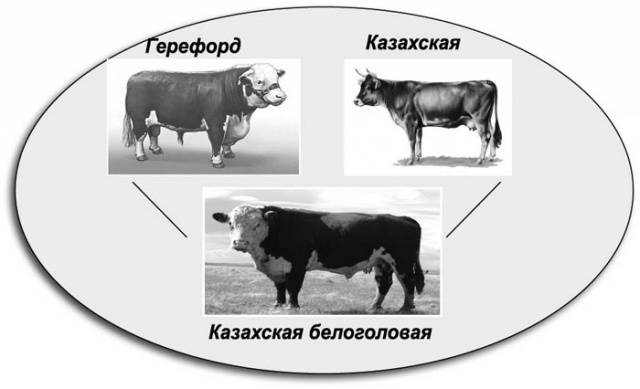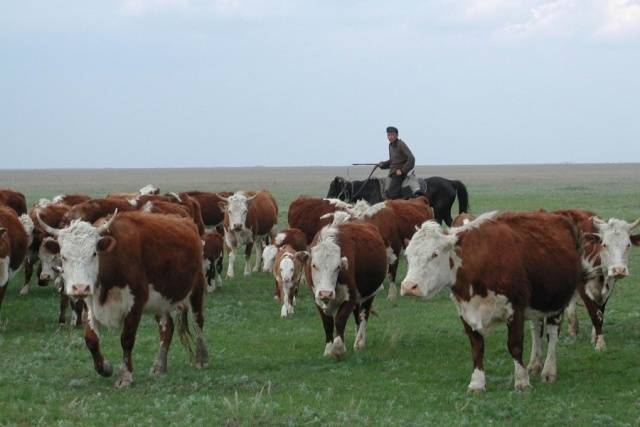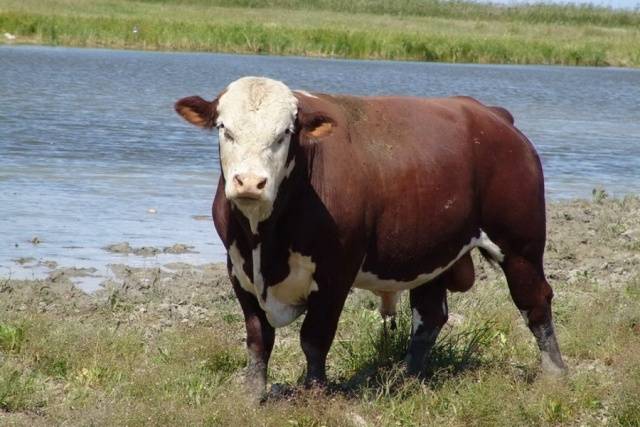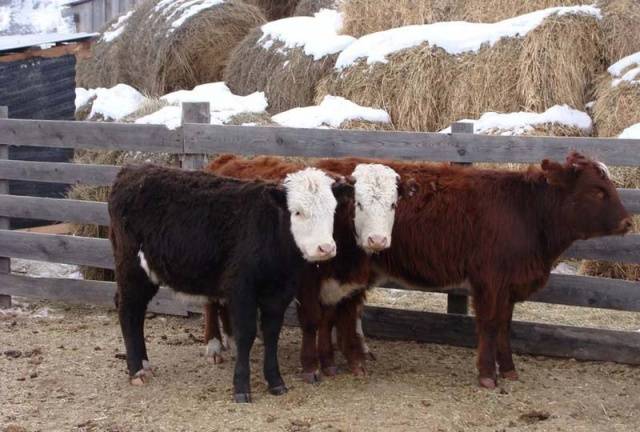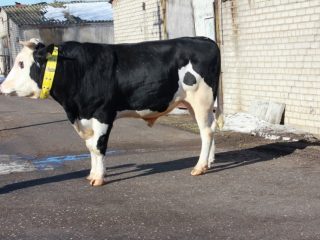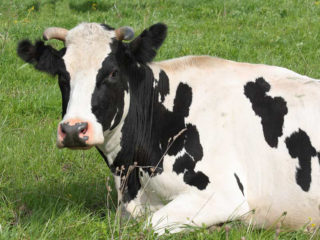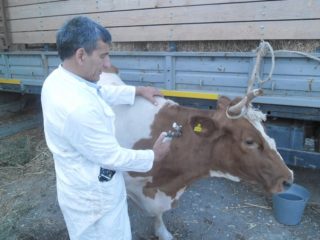Content
The post-revolutionary devastation and the continuing Civil War in the Asian regions of the former Russian Empire, it would seem, did not at all contribute to the calm and competent work of zootechnicians. But time dictated its terms. It was necessary to eliminate hunger and devastation, to feed the population of cities. Under these conditions, it was decided to create a beef cattle breed.
The young Land of Soviets could not allocate grain for livestock feed. People did not have enough grain. Therefore, the main requirement for the breed being created was unpretentiousness and the ability to fatten well on pasture. At that time, the not yet plowed Kazakh steppes were the ideal place for grazing livestock, on the basis of which the Kazakh white-headed breed began to be developed.
Breeding history
The basis for the new breed was the local Kazakh cattle and the English breed of beef cattle - Hereford. Local cattle did not have high meat characteristics. These were light animals more like dairy cattle. But due to the specifics of their habitats, Kazakh cattle did not differ in milk production either. But he had other unconditional merits:
- the ability to survive year-round only on pasture;
- undemanding to feed;
- high resistance to cold and heat;
- disease resistance.
Purebred cattle bred in more prosperous regions of the planet could not survive in the Kazakh steppe. But he was distinguished by excellent meat characteristics. Therefore, it was decided to cross foreign beef cattle with a local breed in order to obtain animals that retained the ability to survive in the steppe conditions, but at the same time could produce high-quality beef.
In 1930, work began on the breeding of the Kazakh white-headed cattle breed. They bred it by absorbing crossbreeding of local cattle with Hereford bulls. The new breed was approved in 1951. As we worked with the livestock of Kazakh white-headed breeds, two types emerged in the breed: meat and meat and milk. In modern Kazakhstan, this breed of cattle ranks first in terms of numbers.
Description of the breed
The Kazakh white-headed breed of cows is very similar to one of its “progenitors” - the Herefords. But it differs from them in a larger and rougher head. The Kazakh whiteheads have a well-defined meat type of constitution. Height 125-130 cm, length 150-155, elongation index 120. Chest girth 187-190 cm. Pastern girth 18-20 cm, bone index 15.
Kazakh white-headed animals are densely built, well-muscled. The body is barrel-shaped, with a well-developed dewlap. The skeleton is thin, strong. The legs are short.
The color of the "Kazakhs" is the same as the Hereford breed of cattle: red with a white head and white pezhin on the belly, legs and tail.
Productive characteristics of the breed
In terms of meat productivity, this breed argues with the Kalmyk and Hereford. The average weight of adult cows is 500-550 kg, bulls weigh 850 kg. The weight of meat-type producers can exceed 1 ton. The weight of calves at birth is small, only 27-30 kg. This makes calving much easier.
The breed of Kazakh white-headed cows has a good response to feed, already by the time of weaning at 8 months of age, the calves weigh 240 kg. By 1.5 years old, heifers have time to gain 320 kg, bulls 390 kg.The average daily weight gain when feeding on pasture is 450-480 g per day. The meat type fed on concentrates can add more than 1 kg daily. Slaughter meat yield is on average 53-63%.
Dairy characteristics of Kalmyk white-headed cows are not high. The milk yield for the lactation period is 1-1.5 tons. In Kazakhstan, where work is still underway to improve the breed by re-crossing with Herefords and selection of livestock according to productive indicators, milk yield reaches 2.5 tons. From the best cows in breeding farmers 5-6 tons of milk were produced per year. The fat content of milk in these cows is 3.8-4%.
Pluses of Kazakh cows:
- resistance to diseases, especially colds:
- the ability to get their own food on their own;
- the ability to gain weight well on free grazing;
- easy adaptation to heat and cold;
- easy calving;
- high quality beef;
- if they managed to catch and milk, then delicious fatty milk with a high protein content.
Livestock is well fed by winter, so it is advisable to slaughter animals culled from pedigree breeding in late autumn, when their weight is maximum.
Of the disadvantages of the breed, one can note the need for extensive pastures for keeping livestock. It is pastures with the possibility of free grazing that ensure the high profitability of such livestock raising. If cows are kept in a "traditional" style in a walking barn, the animals will need to be provided not only with hay, but also with concentrates. Such a diet significantly increases the cost of the final product: "marbled" beef.
The second disadvantage of the breed is a highly developed maternal instinct. The Kazakh white-headed cow is ready to protect her calf even from the owner. Although the influence of the Hereford blood softened the temper of the original Kazakh cattle, in this respect, the “Kazakh women” are very similar to the Kalmyk cows. This is explained by the fact that both breeds were bred and live in the steppes, where wolves are still found. Without a well-developed maternal instinct in queens, wolves will very quickly carve out all young animals.
Areas favorable for breeding
Although in Kazakhstan this breed occupies a leading place among cattle, in Russia there are also areas convenient for keeping this cattle. The breeding zones for the Kazakh white-headed in Russia are:
- Altai;
- Buryat Autonomous Okrug;
- separate areas:
- Saratov;
- Orenburg;
- Samara;
- Volgograd.
Also, this cattle is bred in Ukraine and Belarus.
Reviews of the owners of Kazakh white-headed cattle
Conclusion
Given that there are two types in the breed, private owners can have these livestock even to get milk. The meat and dairy type has a good milk yield, almost twice as high as that of the meat type. For private owners, this breed is beneficial for its unpretentiousness and frost resistance. Kazakh cattle do not need a warm barn.
